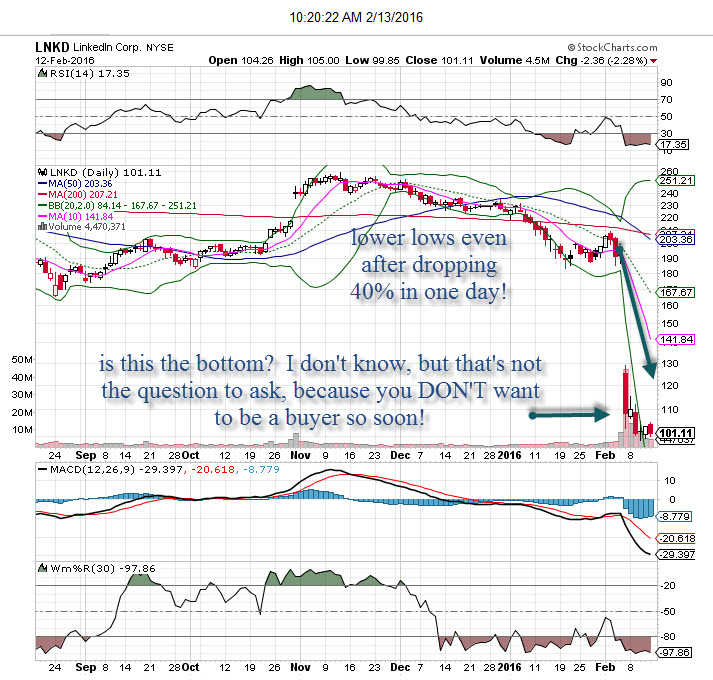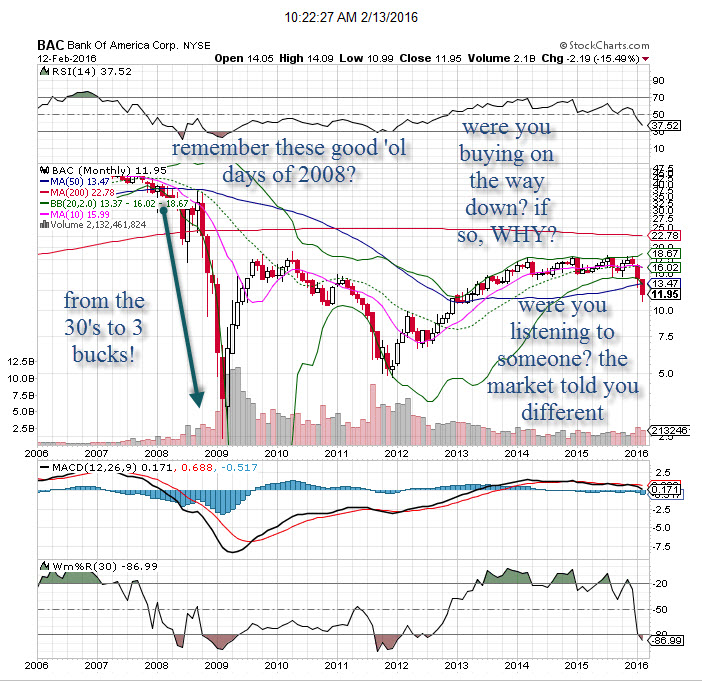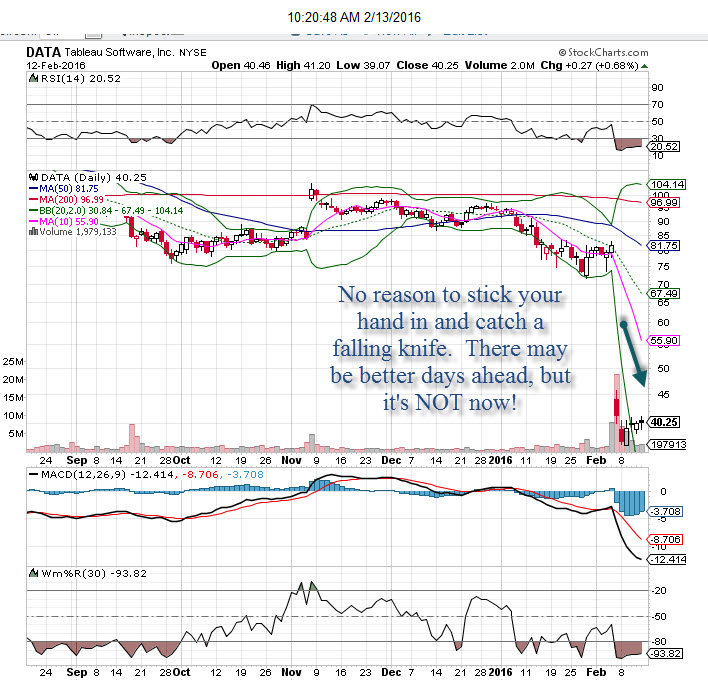Market uncertainty is creating extreme levels of volatility. In fact, it feels like we witness a stock crash everyday. Recently, we saw some epic declines in individual stocks after companies posted shaky earnings reports. Topping the list was long-time growth stock LinkedIn (LNKD), the social networking giant that saw its market value nearly cut in half after reporting weak forward guidance. Tableau Software (DATA) had it even worse, falling nearly 50%. Other stocks also suffered smaller but still significant declines, namely Hanes Brands (HBI) and Outerwall (OUTR).
Selling is being led by institutions, aka, the big money. It is smart to follow institutional money flow, so when they are selling, we need to get out of the way. However, I still get asked, “When a stock plummets, should you buy?”
In short, no. Some may look upon these drops as “gifts from the trading gods,” but frankly, these stocks are not a bargain. If you have a very long time line, you may eventually be correct – that stock you picked up for pennies might be worth a fortune one day.
For example, those who bought Bank of America (BAC) when it was in the $30’s in mid 2008 (it fell to about $3 just six months later), probably got out at even or just a small loss. The beating financial stocks took was unprecedented, yet each drop was supposedly the “buy of a lifetime.” Instead, you were buying hope and wasting time waiting. But if you waited long enough for the sellers to finish up, you would have been OK.
Back to the stocks that dropped recently. When there is an “earthquake” in a stock, we often experience aftershocks. Institutions do not distribute stocks all in one shot, though it may seem like it. Selling happens for many days, and as we see from the chart, these stocks are still being sold. Market rallies do not help stocks rise when there is heavy supply. Stock holders will use these rallies to sell more and least get a “decent” price. 
Volatility in these stocks rises and then starts to retreat as the range narrows, but by then the damage has already been done. All of these stocks have seen lower price lows AFTER the initial break. That is not a coincidence. While some of these stocks (particularly HBI) have recovered a bit from the initial shocking drop, all of them are FAR away from a good buy. You may have thought a 40% drop in LinkedIn to $110 was what you were waiting for, but now the stock is $101. Do you really want to be down 10% after buying it on the first break?
Ideally, we would wait for the selling to subside, a nice base to be built (telling us the excess supply is being worked off) and confirmation that a stock is moving upward. Building a base (aka, basing) could take days weeks or months. The bigger the first drop, the longer the basing will be.
In the case of LinkedIn and Tableau Software, they may not recover for many months to come. Is it worth it to leave your money sitting in a stock that big money is ignoring?
Copyright: hjalmeida / 123RF Stock Photo



















